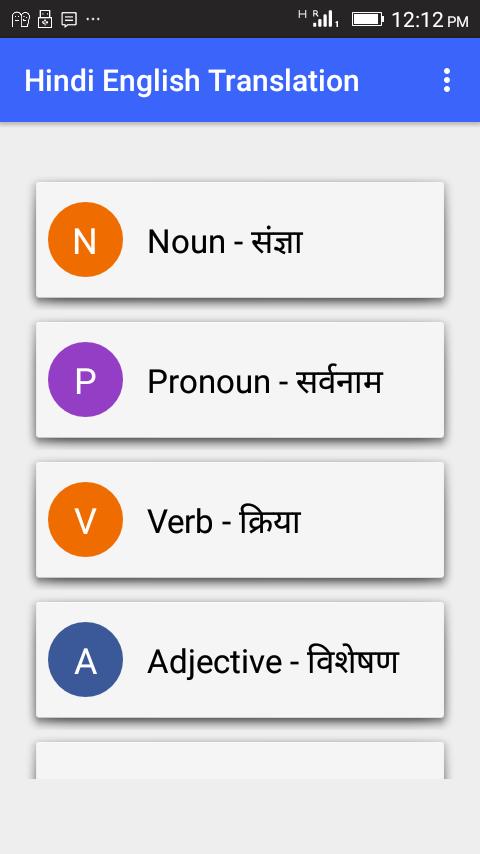Introduction:
Language Hindi is a dynamic and versatile tool that facilitates communication, reflecting the rich tapestry of cultures and societies. In multilingual environments, individuals often engage in a phenomenon known as code-switching, where they seamlessly transition between two or more languages within a single conversation. This linguistic practice is particularly prevalent in regions like India, where Hindi and English coexist as major languages. This article delves into the intricate world of code-switching, examining its patterns, purposes, and sociolinguistic implications in the context of Hindi and English transactions.
Understanding Code-Switching:
Code-switching refers to the fluid alternation between two or more languages or language varieties within a single discourse. In the case of Hindi-English transactions, this phenomenon is a natural reflection of the linguistic diversity present in India. Individuals adept in both languages effortlessly switch between them based on contextual, social, or emotional factors.
Patterns of Code-Switching:
Code-switching in Hindi and English transactions follows distinct patterns that reveal much about the speakers and the context. The choice of language can depend on factors such as formality, topic, audience, and emotional tone. For instance, a conversation may begin in but seamlessly transition to English when discussing formal matters or incorporating technical terms. The patterns are often subconscious, demonstrating the speaker’s linguistic versatility.
Purposes of Code-Switching:
- Pragmatic Function: Code-switching serves a pragmatic purpose in communication. Speakers may choose a particular language to convey a message more effectively. For example, English might be employed for clarity when discussing complex technical concepts, while Hindi may be preferred for emotional expression.
- Social Identity and Solidarity: Code-switching can also be a tool for expressing social identity and solidarity. In informal settings, individuals may code-switch to Hindi to create a sense of familiarity, bonding, or shared cultural background, fostering a stronger connection among speakers.
- Contextual Adaptation: The choice of language often adapts to the context. In professional or academic settings, English may dominate, reflecting its status as a global lingua franca. In contrast,may take precedence in more casual or familial environments, emphasizing cultural roots and personal connections.
Sociolinguistic Implications:

- Bilingual Proficiency: Code-switching highlights the bilingual proficiency of individuals. It signifies a deep understanding and command of both languages, showcasing linguistic dexterity and the ability to navigate diverse linguistic landscapes.
- Cultural Fusion: In the Indian context, English code-switching reflects the cultural fusion that characterizes the nation. It is a linguistic manifestation of the coexistence of traditional and modern elements, showcasing the adaptability of language to societal changes.
- Communication Dynamics: Code-switching influences communication dynamics by shaping the tone, formality, and emotional resonance of a conversation. The seamless transition between Hindi and English allows speakers to convey nuanced meanings that may not be as effectively expressed in a single language.
Examples of Code-Switching:
- Formal Conversations:
- English: “Let’s schedule a meeting next week to discuss the project timeline.”
- Hindi: “Hum log agle haftay ek meeting rakh lete hain, project ki timeline pe baat karenge.”
- Expressing Emotions:
- Hindi: “Mujhe bahut khushi hui tumhe dekhkar!”
- English: “It was so nice to see you after such a long time!”
- Technical Discussions:
- English: “The algorithm uses a machine learning approach to optimize the data processing.”
- Hindi: “Algorithm machine learning ka istemal karta hai data processing ko optimize karne ke liye.”
Code-Switching: An Exploration of Hindi-English Transaction in Multilingual Communication
Introduction:
Language is a dynamic and versatile tool that facilitates communication, reflecting the rich tapestry of cultures and societies. In multilingual environments, individuals often engage in a phenomenon known as code-switching, where they seamlessly transition between two or more languages within a single conversation. This linguistic practice is particularly prevalent in regions like India, where Hindi and English coexist as major languages. This article delves into the intricate world of code-switching, examining its patterns, purposes, and sociolinguistic implications in the context of Hindi and English transactions.
Understanding Code-Switching:
Code-switching refers to the fluid alternation between two or more languages or language varieties within a single discourse. In the case of Hindi-English transactions, this phenomenon is a natural reflection of the linguistic diversity present in India. Individuals adept in both languages effortlessly switch between them based on contextual, social, or emotional factors.
Patterns of Code-Switching:
Code-switching in Hindi and English transactions follows distinct patterns that reveal much about the speakers and the context. The choice of language can depend on factors such as formality, topic, audience, and emotional tone. For instance, a conversation may begin in but seamlessly transition to English when discussing formal matters or incorporating technical terms. The patterns are often subconscious, demonstrating the speaker’s linguistic versatility.
Purposes of Code-Switching:
- Pragmatic Function: Code-switching serves a pragmatic purpose in communication. Speakers may choose a particular language to convey a message more effectively. For example, English might be employed for clarity when discussing complex technical concepts, while Hindi may be preferred for emotional expression.
- Social Identity and Solidarity: Code-switching can also be a tool for expressing social identity and solidarity. In informal settings, individuals may code-switch to Hindi to create a sense of familiarity, bonding, or shared cultural background, fostering a stronger connection among speakers.
- Contextual Adaptation: The choice of language often adapts to the context. In professional or academic settings, English may dominate, reflecting its status as a global lingua franca. In contrast, Hindi may take precedence in more casual or familial environments, emphasizing cultural roots and personal connections.
Sociolinguistic Implications:
- Bilingual Proficiency: Code-switching highlights the bilingual proficiency of individuals. It signifies a deep understanding and command of both languages, showcasing linguistic dexterity and the ability to navigate diverse linguistic landscapes.
- Hindi-English code-switching reflects the cultural fusion that characterizes the nation. It is a linguistic manifestation of the coexistence of traditional and modern elements, showcasing the adaptability of language to societal changes.
- Communication Dynamics: Code-switching influences communication dynamics by shaping the tone, formality, and emotional resonance of a conversation. The seamless transition between and English allows speakers to convey nuanced meanings that may not be as effectively expressed in a single language.
Examples of Code-Switching:

- Formal Conversations:
- English: “Let’s schedule a meeting next week to discuss the project timeline.”
- Hindi: “Hum log agle haftay ek meeting rakh lete hain, project ki timeline pe baat karenge.”
- Expressing Emotions:
- Hindi: “Mujhe bahut khushi hui tumhe dekhkar!”
- English: “It was so nice to see you after such a long time!”
- Technical Discussions:
- English: “The algorithm uses a machine learning approach to optimize the data processing.”
- Hindi: “Algorithm machine learning ka istemal karta hai data processing ko optimize karne ke liye.”
Conclusion:
In the intricate dance of Hindi and English transactions, code-switching emerges as a fascinating phenomenon deeply rooted in the sociolinguistic fabric of India. It is a testament to the adaptability and fluidity of language, showcasing the diverse ways in which individuals navigate linguistic spaces. As we celebrate the nuanced interplay of Hindi and English on this linguistic journey, we acknowledge the richness it brings to communication, fostering a deeper understanding of culture, identity, and the ever-evolving nature of language.

